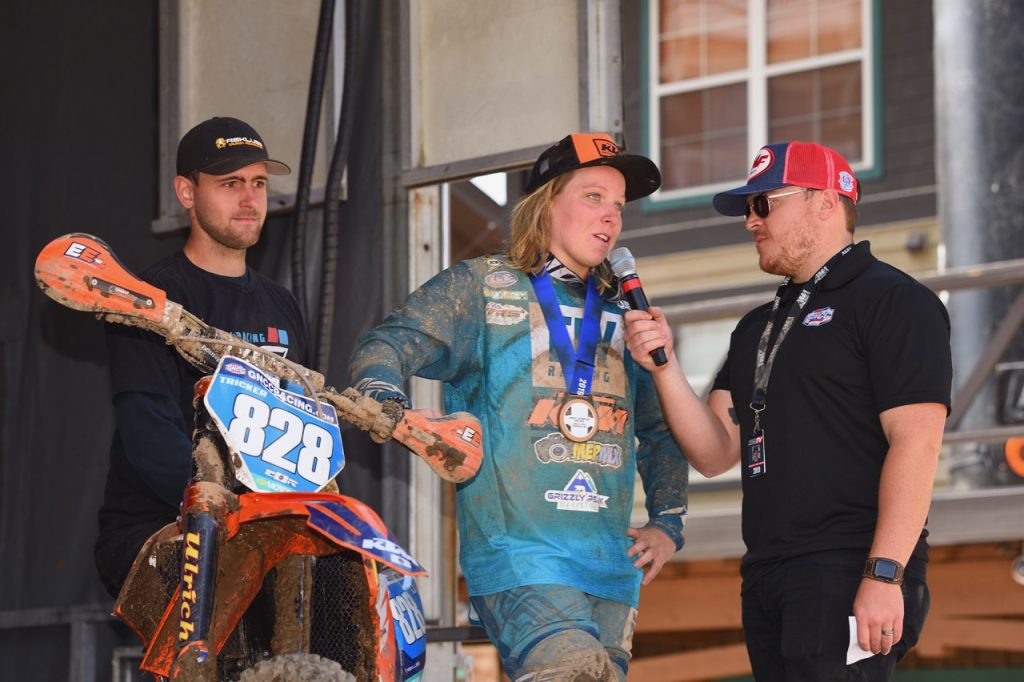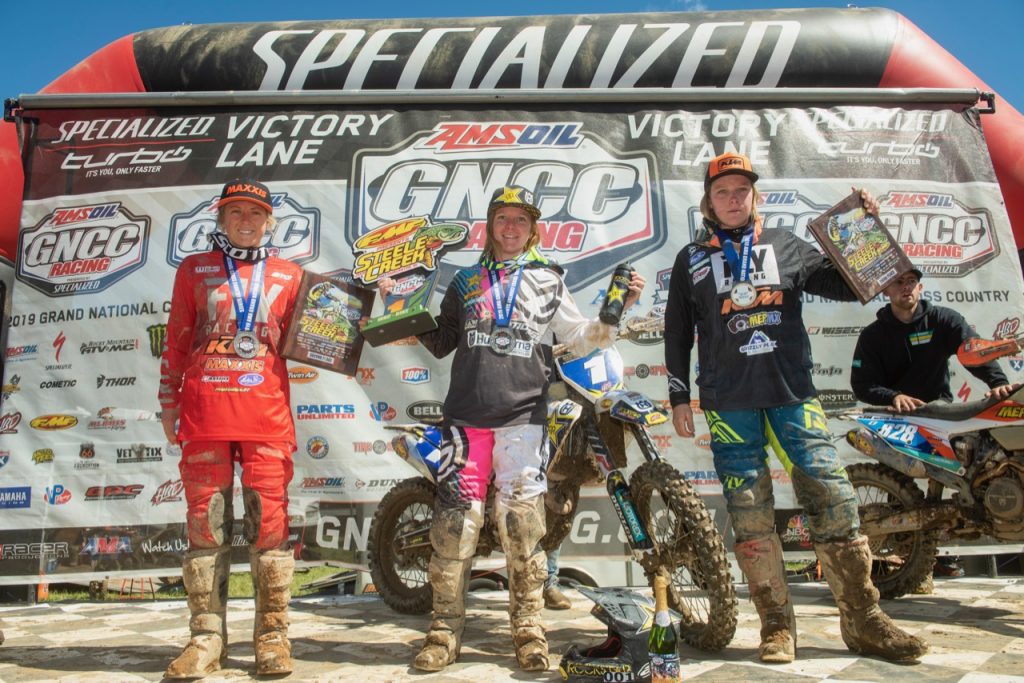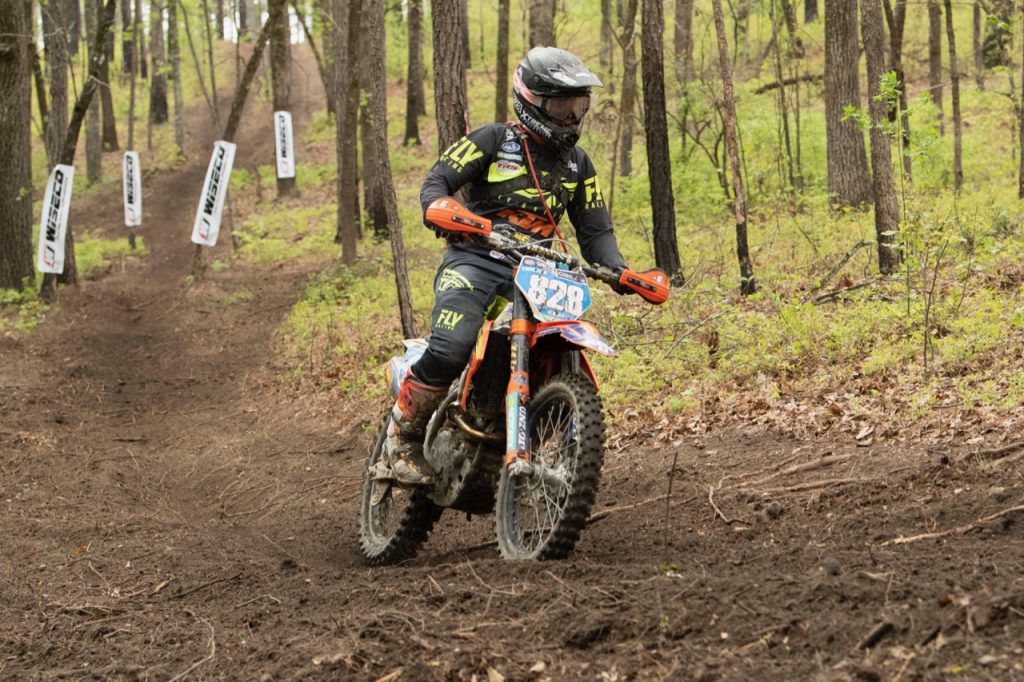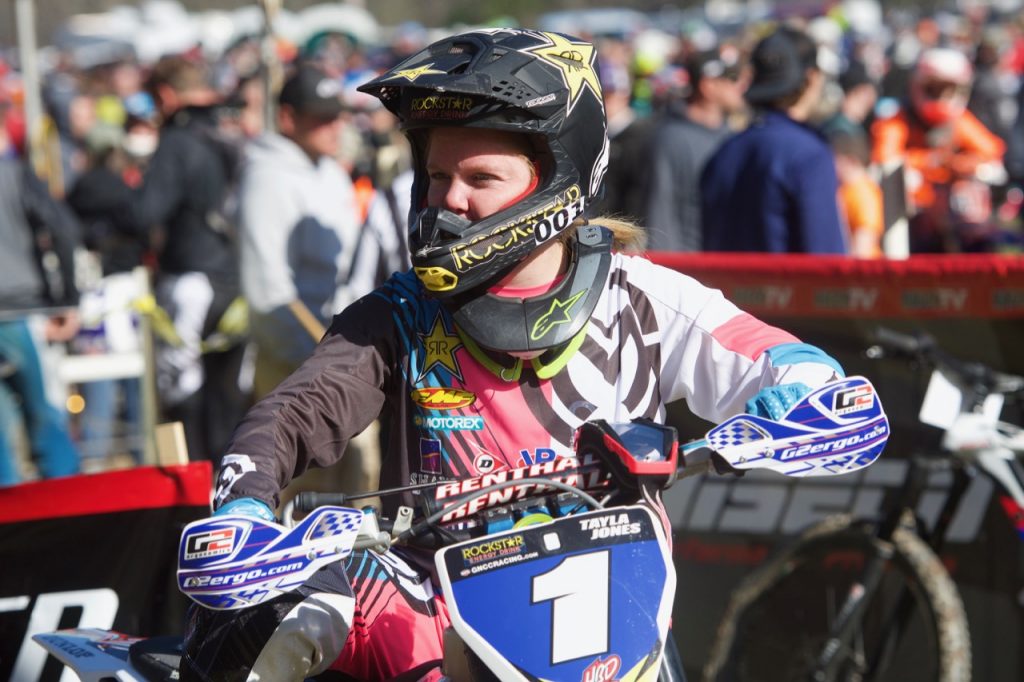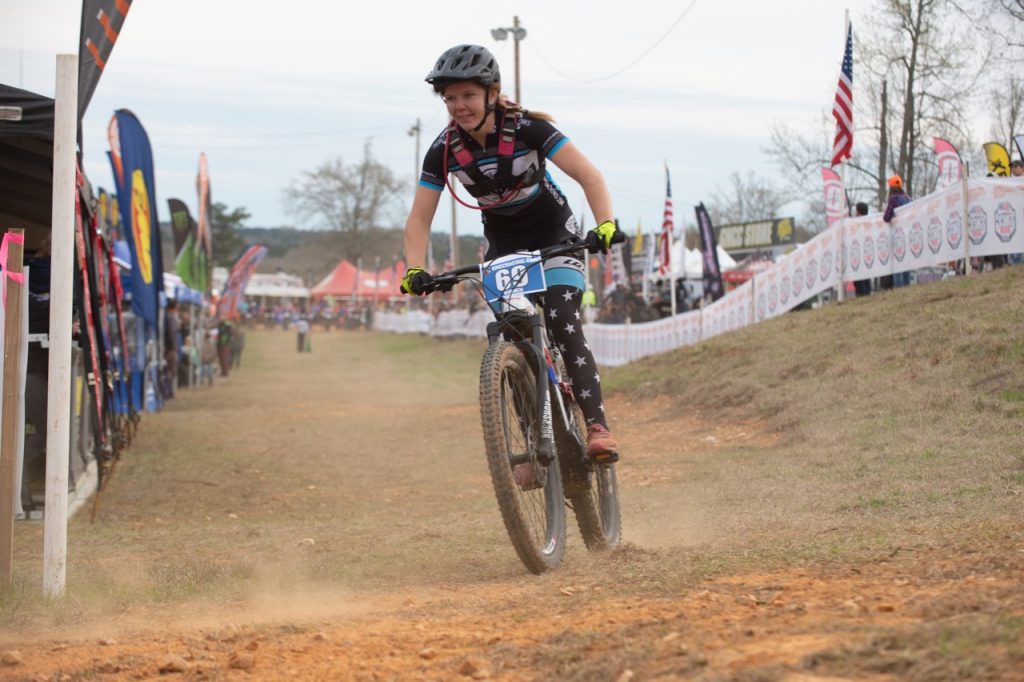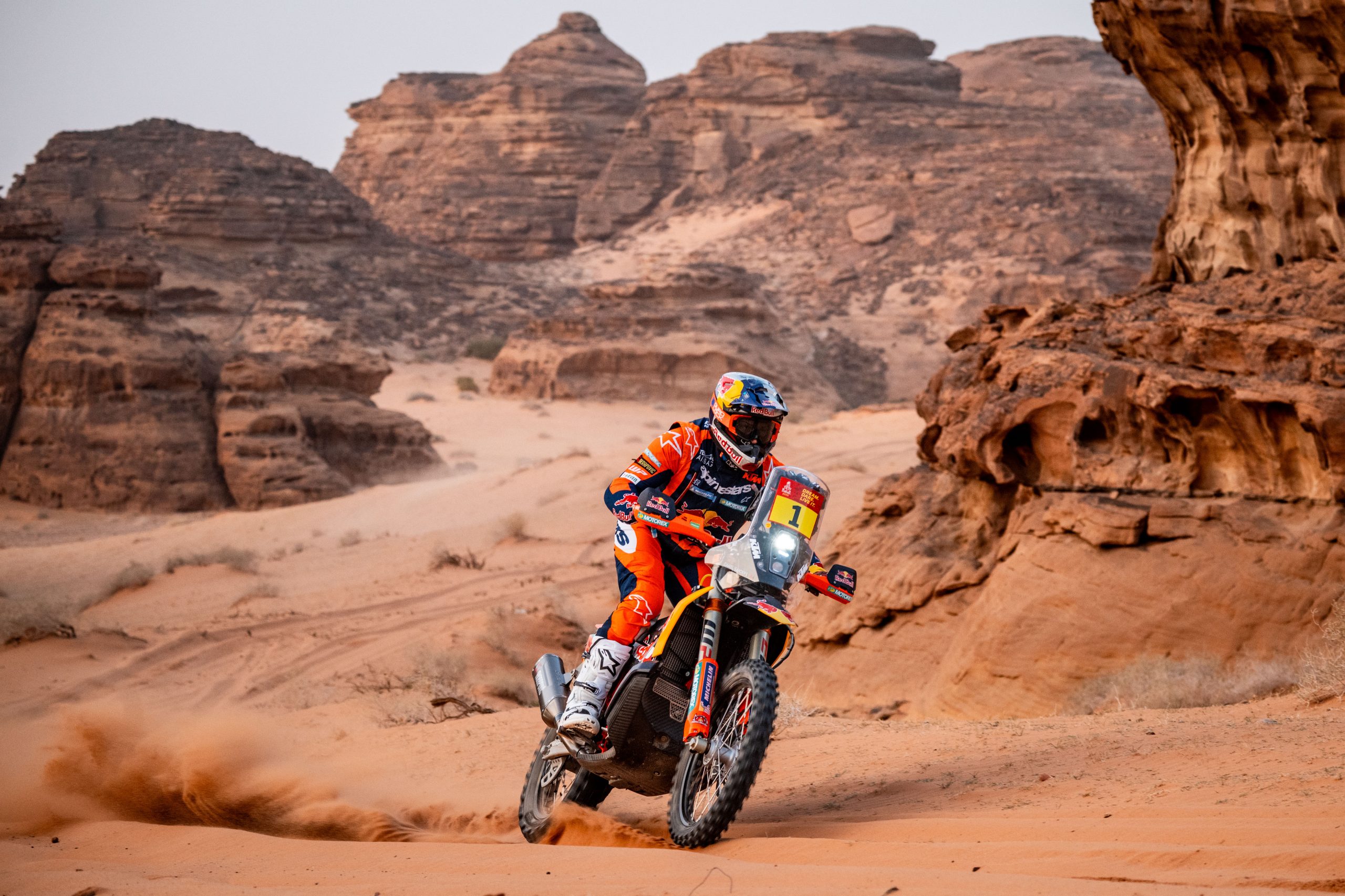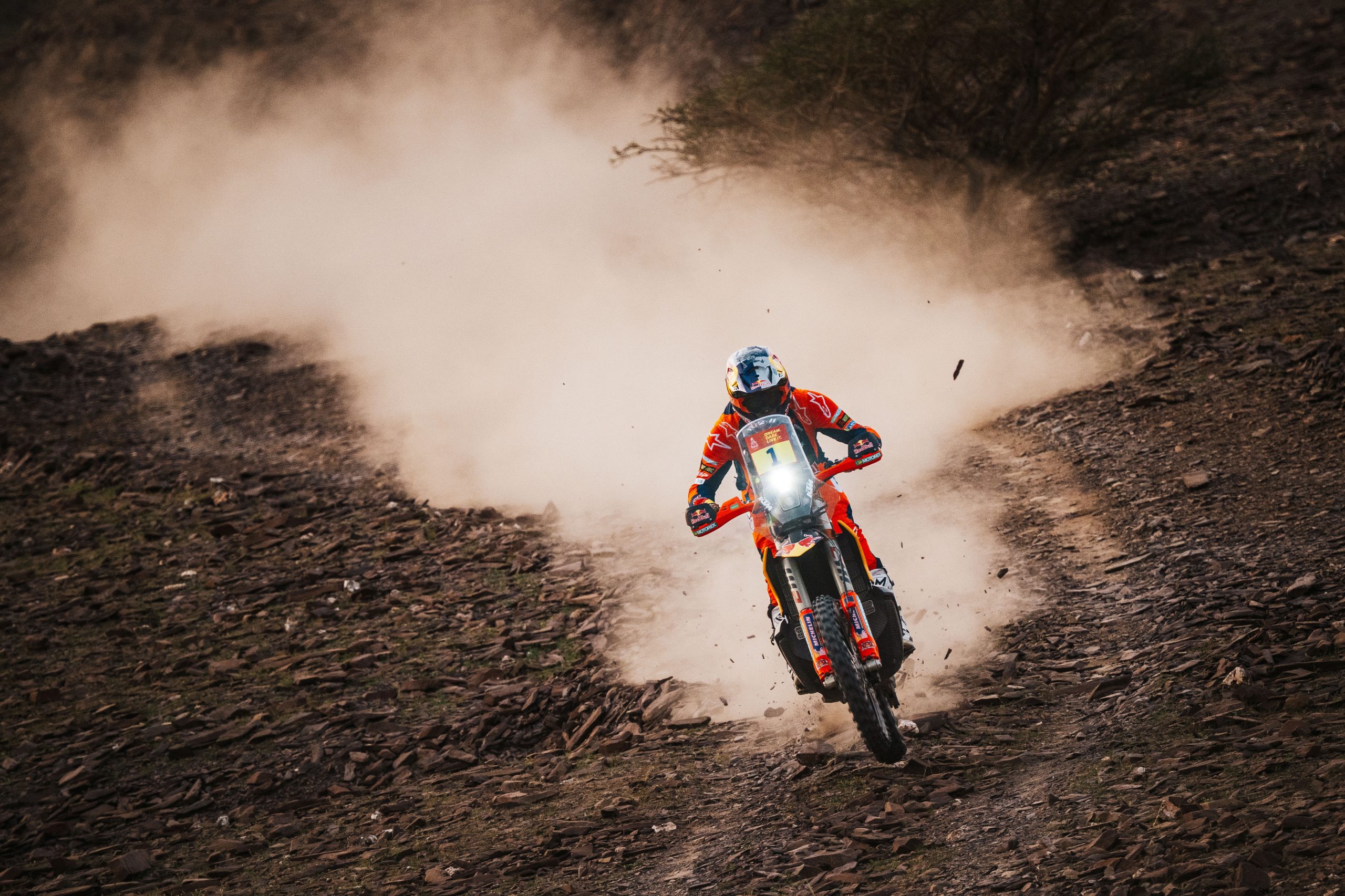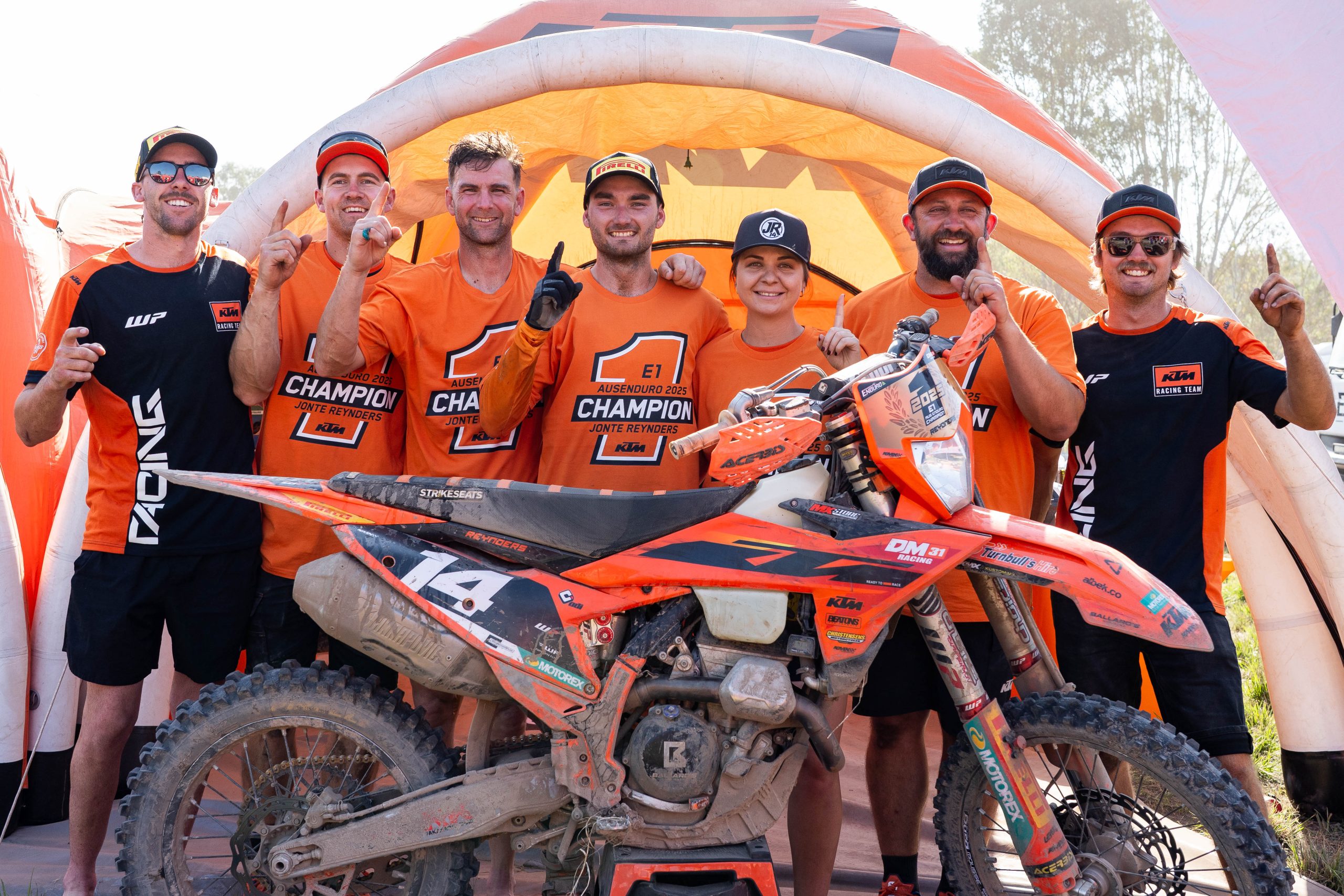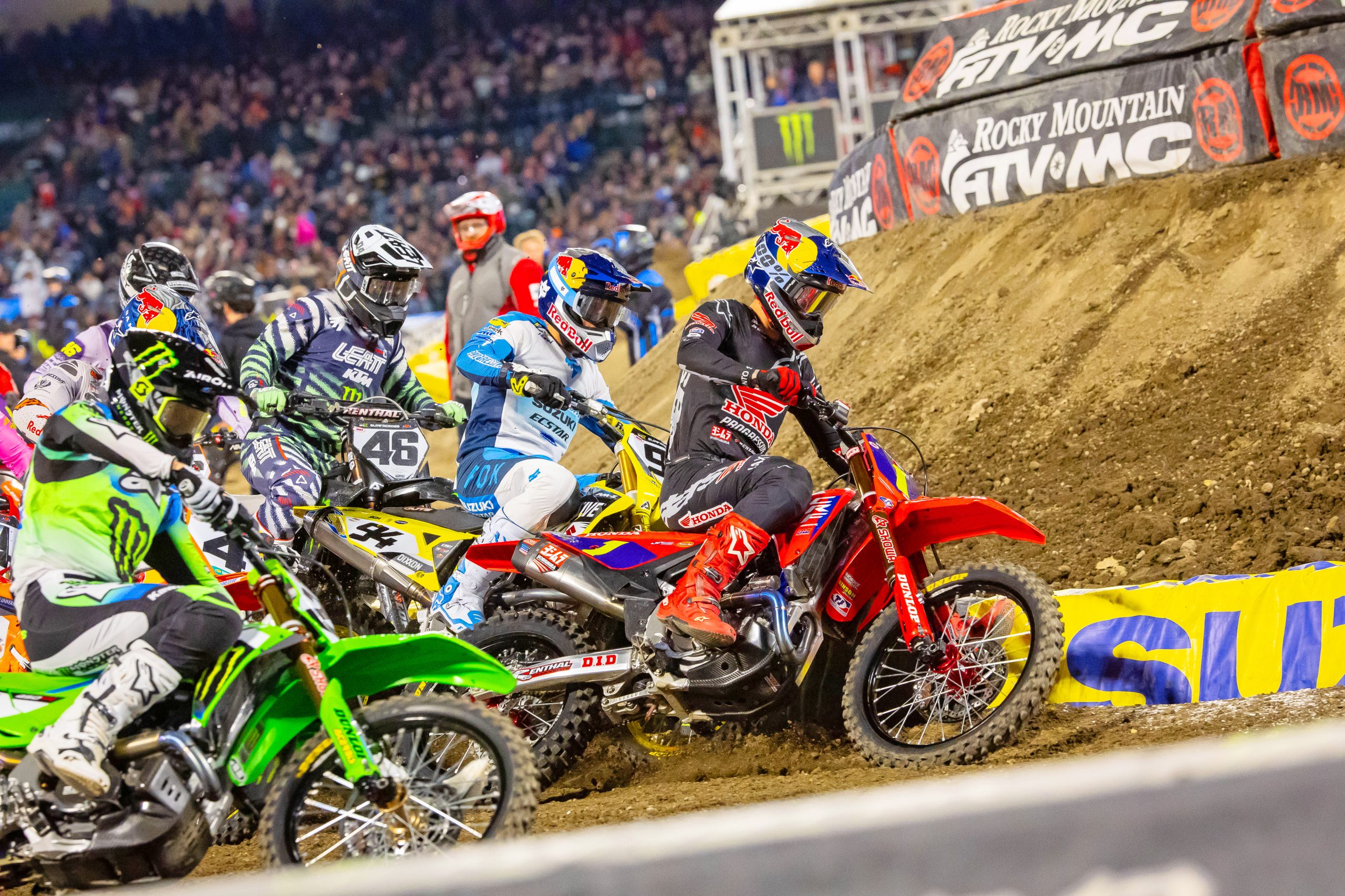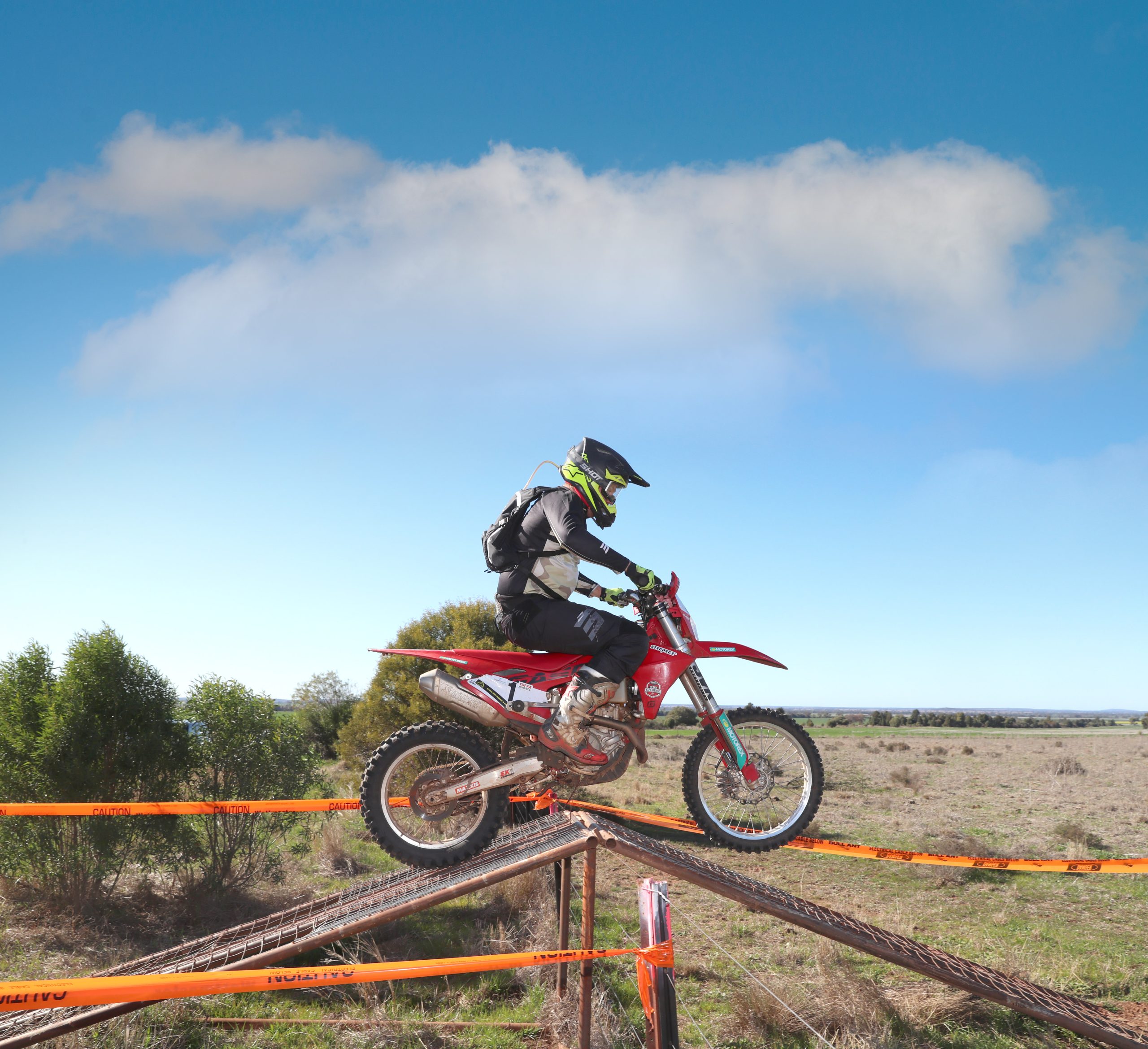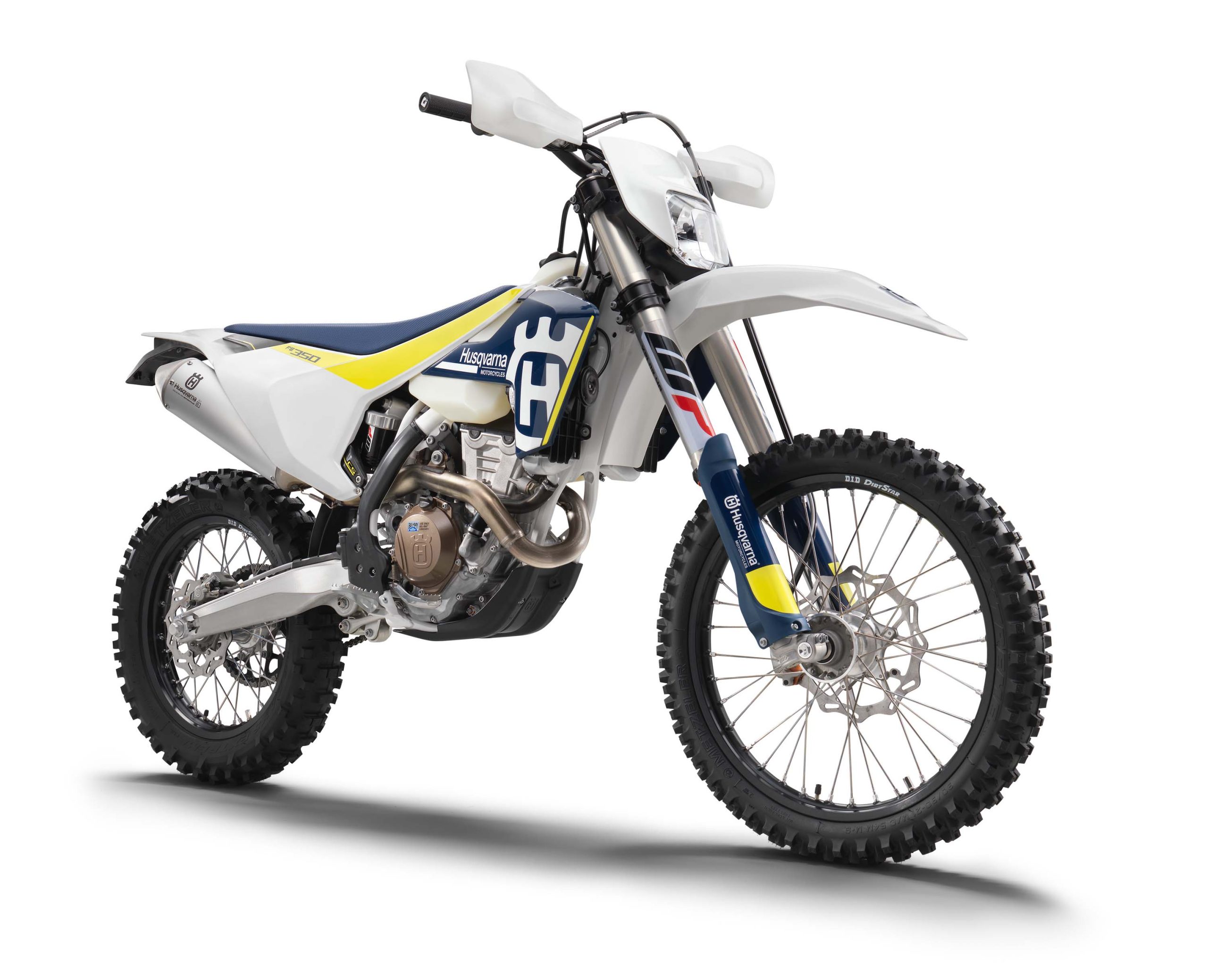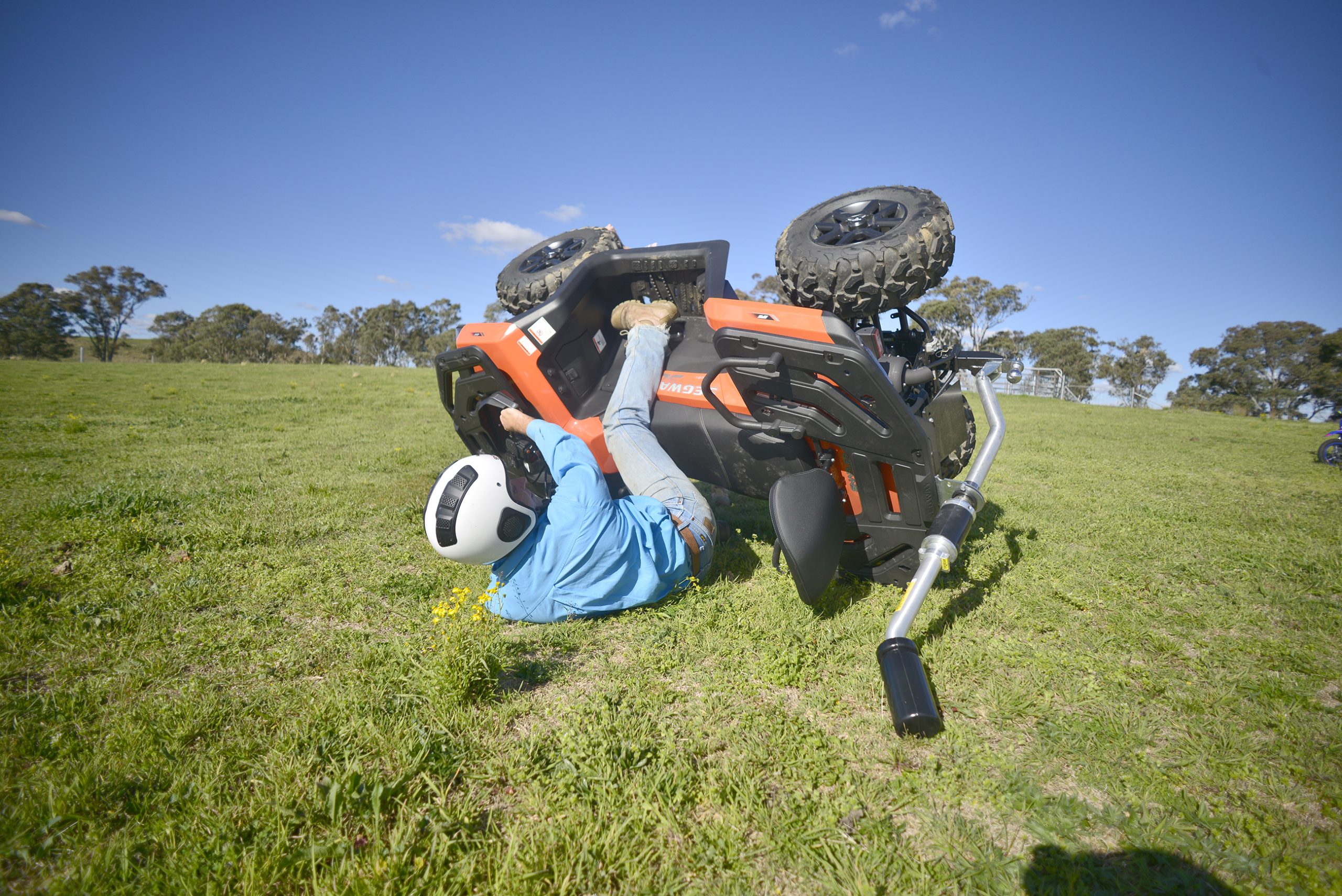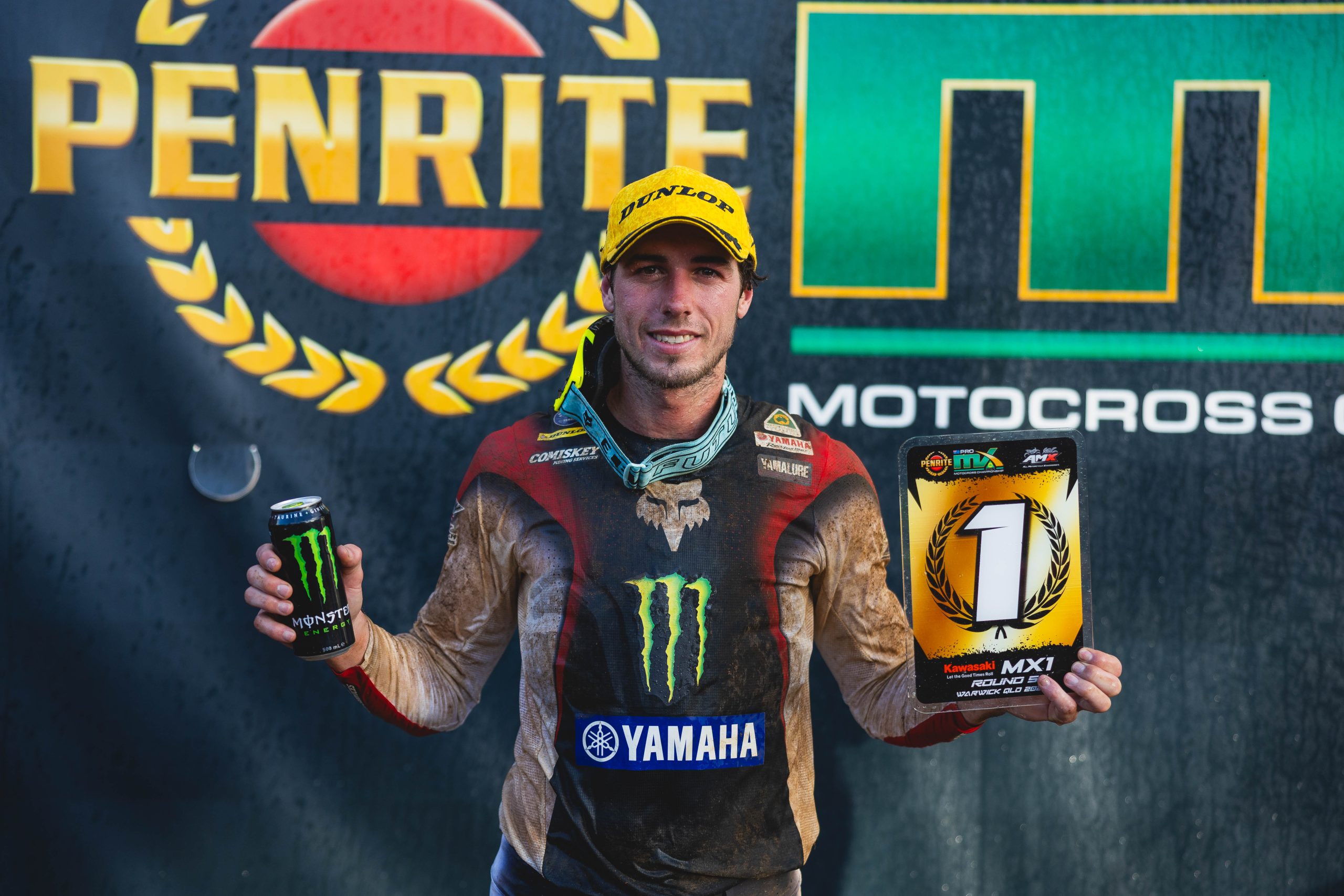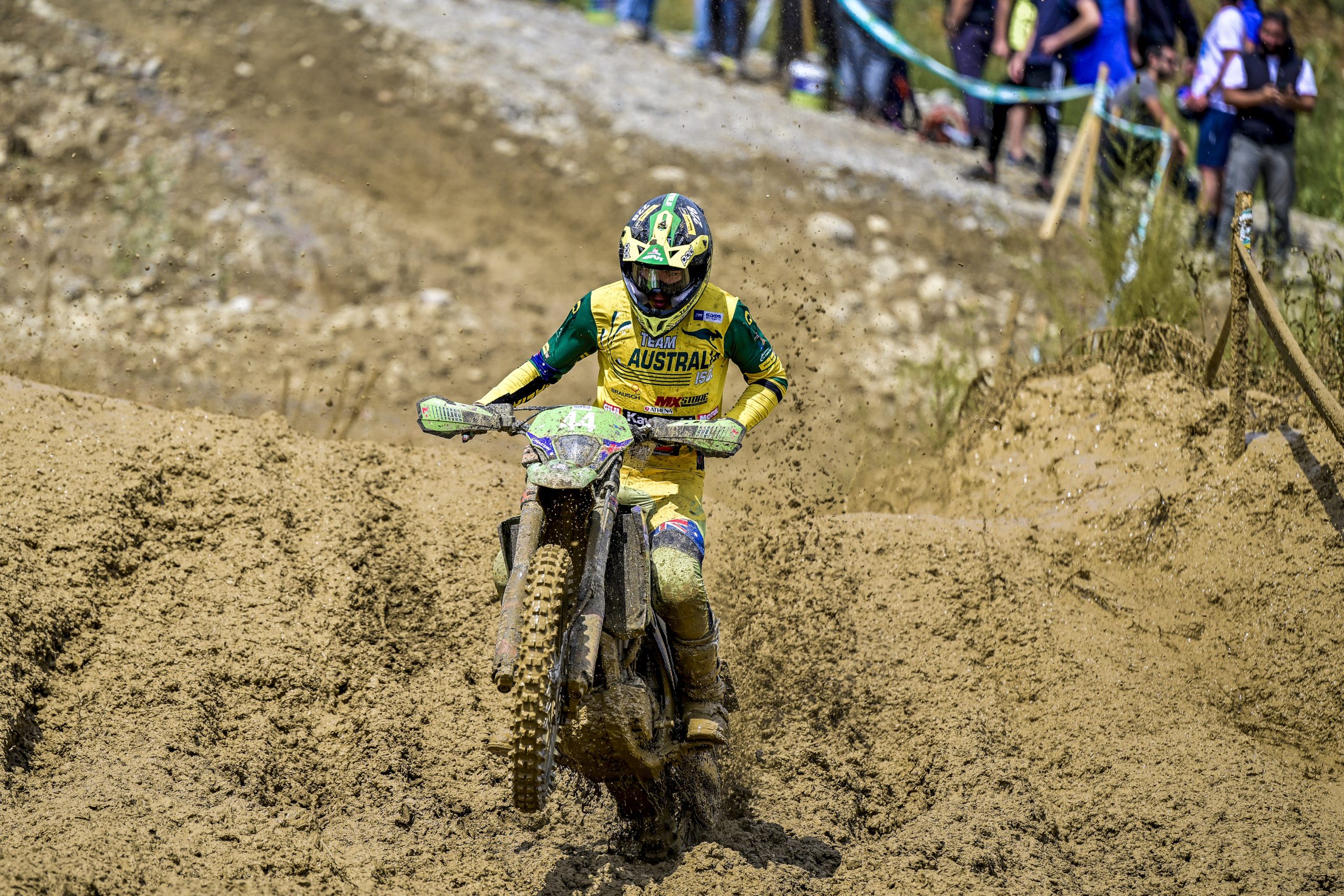Our female cricket team seem indestructible, our women’s sevens rugby team are Olympic gold medallists, Australian netball sits atop the world rankings, our hockey team are second and our basketballers third in their respective rankings. But I’m struggling to find a sport our women dominate more than enduro.
The International Six-Days Enduro women’s team has won an incredible six straight gold medals. I can only imagine how frustrating it must be for the rest of the dirtbike world when riders like Jemma Wilson, retire only for us to unearth more talent like Tayla Jones and, more recently, Mackenzie Tricker.
In 2017, our women dominated the ISDE and their competitors went running home licking their wounds. The only problem was, they left a trail of breadcrumbs that Mackenzie and Tayla followed.
Mackenzie has been in the US for years plying her trade in motocross while Tayla joined her in 2017 and has been in devastating form. She cleaned up last year’s GNCC WXC class and won this year’s Full Gas Sprint Enduro series with a round to spare while Mackenzie has wrapped up the Women’s Elite class in the Full Gas Sprint Enduro series with two rounds left. But just how hard is it for women in our sport to make the move to race overseas?
Are you guys able to make a living out of racing dirtbikes in the US?
Tayla Jones: I am making enough to live and have fun. I can’t say I’m rolling in money and could support myself if I was to stop racing today. It’s definitely tough, especially being a woman in this sport, to get enough support to make a full-on living from it but I believe it’s getting better. I have an awesome bunch of sponsors who really help out and, as long as I’m doing what I love and having fun, I won’t be stopping anytime soon.
Mackenzie Tricker: Most of it is results-based. I have a few sponsors that help out a little up front but not enough to live off. That’s why I race all three off-road series on the east coast which means we race about 34 weekends of the year. Sponsors want to pay to see you on the podium, so winning is where you make the best money but if you have a bad weekend and you get third you can’t complain. Fourth is when it really sucks, because that’s when it cost you money.
What can other girls planning to race in the US expect if they make the leap?
TJ: It hasn’t been hard at all. The culture isn’t much different to home and the language is mostly the same with a few terms thrown in. It’s kinda funny listening to their accents here in different parts of the country because it isn’t the same in NY as it is in SC and it’s different again just driving a few hours further south and so on. Literally every state has its own slang. Everyone loves an Aussie accent though. The food can get out of hand at times. There is so much bad food but is also amazing at the same time that you’ve got to talk yourself out of eating, which can be hard to do! But mostly it’s not a lot different to home which has helped make living here so much easier.
MT: At first it was super tough. I was 15 or 16 when I first moved here, but at the time I really wanted to make it in WMX, and I knew Australia’s women’s racing was weak so I knew the US was the only option. It’s definitely got easier growing up, maturing and meeting a lot of people that treat me like family. It feels normal to me now but definitely at times it’s tough. Last year I lost my grandfather and I wasn’t able to make it home for his funeral which was pretty heart-breaking just not being able to be there for my family. But I raced that weekend and was able to win so, in a way, that made it a little easier missing it since I knew that would have made him proud. At times being a 30-hour trip from home is tough.
How receptive are overseas teams of Aussie riders? Do they feel like you’re imposing on their turf?
TJ: Everyone over here I’ve met has been great. They treat me like family in the racing community and there isn’t any turf wars or anything. Aussies are definitely more laid back for sure and our language is a little more on the offensive side so some people so I have to explain I’m just joking so they don’t take offence too much.
MT: Everyone is pretty supportive, they realize we are two young girls living on the other side of the world, away from our families so they look after us. When it comes to the Six-Days, Team USA is a little distant with us obviously, which makes sense because it’s the same in the local competition, we race against them.
What’s the living situation over there? Do you get to ride with each other during the week?
TJ: I have my own one-bedroom place in South Carolina. I’ve moved around a little bit since getting here but SC is a great place to live and it’s in an area that makes riding easily accessible and it’s not a terrible amount of driving to each race. The furthest we have to go is to NY state which is around 14 hours. “Kenz” lives about an hour from me so we hang out a bunch and go riding. We’ve travelled to some races together when they’re far away, so that’s been good. It’s cool to have someone close that I grew up racing against and we can talk about stuff going on at home that no one else would understand.
MT: I live with my boyfriend Dylan in a shouse [shared house]. I ride with Tayla every now and then and we hang out every now and then. Dylan, who is also my full-time mechanic, quit his job last year and moved from North Carolina to South Carolina to basically go racing full-time with me. His dad is a mechanic on Kevin Harvick’s Nascar so if we have a weekend off we will try to go watch stock car racing. During the summer I did some local MTB races on Thursday nights.
What is it that makes you girls so much faster than the rest of the world?
TJ: I really don’t know what it is. There is a lot of fast women over here and all around the world. It’s kind of crazy to look back on the past years here in America with Kenz and myself being on top and then with Jess at the ISDE becoming six-times world champs. I think growing up in Oz we had a strong, well-rounded base of racing with different terrains and styles which definitely helped me at least. We are a strong country even though we have a lot less people and our drive and competitiveness really shows in our racing. It is so awesome to see what Australia can do as a whole on the world stage with so many incredible athletes coming from there.
MT: I really don’t know. I think us Aussies really have a different attitude and way of life to Americans, that’s for sure. There’s a lot more Aussies that are hard arses and tough I think, but there’s definitely some good American women. I think Tayla and I switching to off-road in the USA in the same year (2017) has really elevated the sport for sure.
You guys have dominated Sprint Enduro but, despite the most GNCC wins, you find yourself in second, Tayla. Is it tricky racing three series?
TJ: Yes, the Sprint Enduro series is wrapped up and I was stoked to take my third consecutive championship in that. I really like that style of racing and they put on awesome events. The GNCC is a longer series so we still have two rounds to go. The start of my season was really good but, unfortunately, in June I broke all the fingers on my left hand, which needed extensive surgery. I missed a couple of GNCC rounds but, fortunately for me, they allow three drop races a season so my worst rounds (the two I missed and a mechanical DNF earlier) will be dropped so I still have a good chance at winning the title. I like doing different series because it keeps you on your toes and brings different skills/styles to different events and they all help one another.
MT: We have been racing three series, Tayla and I race GNCC, AMA National Enduro and Sprint Enduro. I haven’t been doing as good at GNCC, I’ve been on the podium nearly every race but didn’t win a race. Tayla has been dominant this year except at the final round at Chestnut Corner [SC], where I was finally able to win. In AMA National Enduro I have been pretty dominant, winning seven of the eight races so far this year and securing the title in Indiana with two to go.
What’s been the hardest thing to take in 2019?
TJ: Definitely my worst moment was breaking my fingers. They shattered in between the first two knuckles and I had to have surgery plating three of them back together, which required 23 screws and 42 stitches. It has been a long road to recovery and I still don’t have all my strength back. I used a Rekluse when I first started riding again as I couldn’t pull in a clutch, all I had to do was hold on. If anyone has tried riding a bike with no clutch, it’s extremely hard! I couldn’t ride like I used to because I’d just run into trees and stuff so I had to change the way I rode for awhile. I’m at the point now that I can pull in a clutch and I’m starting to feel like normal again, which I’m extremely happy about.
MT: I split my toe open on lap three at round nine of the GNCC [in Dunkard, Pennysylvania]. I was leading so I knew I couldn’t pull off. I actually just thought I broke my toe but I’d actually split it in three spots, it was hanging on by a thread. Turns out it was broken in two places. I ended up second.
It must be awesome kicking some American butt. What’s been the highlight so far?
TJ: Wrapping up the Sprint Enduro championship is the highlight of the year so far. The sprints are so much fun and it’s like I’m back home again racing like we do in the AORC. The high intensity and the fast, flowy tracks is always a good time. I was actually able to do the first sprint enduro ever run in America back in 2014 when I came for a visit so it was on the top of my list of racing I wanted to do when I moved here.
MT: Honestly, just a few weeks ago, winning the last round of the Sprint Enduro title. I’ve had my arse kicked all season by Tayla, and sometimes even Bec Sheets has beaten me. The last race was Team USA’s ISDE camp so they had all their Trophy Teams there, so we had an even more stacked women’s line up and I was able to win the overall. That was an awesome feeling, because everyone was there and because I feel I haven’t done so well all year so it was good to finish that series on a high.
What’s going on behind the scenes?
TJ: This year I decided to part ways with the team I was on and did my own thing. I have amazing support from Husqvarna USA and Moose Racing and we worked out a deal that was better than any team was able to give to support any woman racer so that was really cool. I have met so many people in the industry and it’s awesome to work with them and build an athlete brand for myself here.
MT: I should have probably got a 350EXC-F earlier than I did because that’s what I’m doing better on! I’ve been riding one a little bit lately and it’s helping me a lot and obviously being a lot bigger then the other girls it carries my weight a lot better.
What’s the contract deal for 2020, any plans to return home and race?
TJ: I will be back in America again in 2020. Contracts aren’t fully worked out yet but I have deals on the table. The racing is on a whole different level compared to Oz so I want to continue chasing my dreams in the US for as long as I can.
MT: I’m going to stay here and race at least another year, after that I don’t know. I don’t see any future for me racing in Australia unless someone wants to pay me some big money to come and race, then maybe I might consider it (laughing).
WORDS: MITCH LEES | PICS: Ken HILL/GNCC RACING, @dchapman457 | THIS FEATURE WAS PUBLISHED IN ADB MAGAZINE BEFORE THIS YEAR’S ISDE
